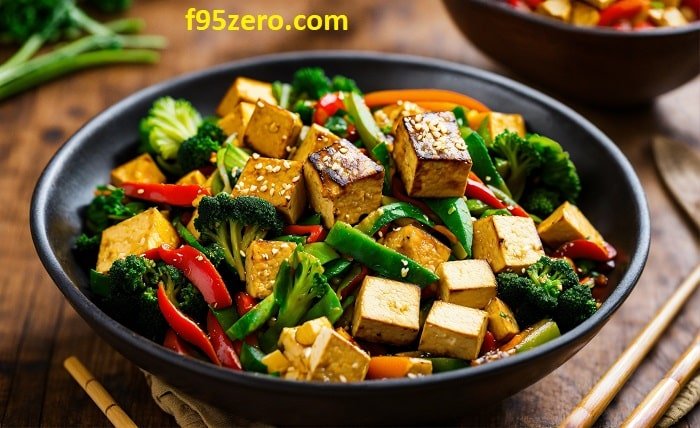Stir-Fry Essentials: Mastering the Art of Quick and Delicious Meals

Stir-fry: a culinary technique beloved for its simplicity, speed, and endless flavor possibilities. But before you embark on your stir-frying journey, a few essentials are key to turning out restaurant-worthy dishes every time. From the pan you use to the sauces you have on hand, this guide will equip you with the knowledge you need to stir-fry like a pro.
1. Wok It Out Finding the Perfect Pan
While technically any pan works, a traditional wok reigns supreme. Its rounded bottom ensures even heat distribution and rapid cooking, essential for preserving your ingredients’ vibrant colors and textures. If space is limited, a deep, wide-bottomed frying pan can do the trick.
2. Oil Up for Success: Choosing the Right Fat
Not all oils are created equal for stir-frying. Opt for oils with high smoke points, like peanut, canola, or vegetable oil. They can withstand the high heat without burning and imparting unwanted flavors. Sesame oil, with its nutty aroma, is best used for finishing touches, not high-heat cooking.
3. Protein Power: Meat, Seafood, or Tofu?
The choice is yours! Chicken, beef, shrimp, tofu – the possibilities are endless. Marinate your protein for extra flavor, and cut it into bite-sized pieces for even cooking. Remember, pre-cook tougher meats before adding them to the wok.
4. Vegetable Symphony: A Chorus of Colors and Textures
The beauty of stir-fry lies in its versatility. Broccoli, bell peppers, mushrooms, carrots – the list goes on! Choose a mix of vegetables with varying cooking times, adding them in sequence. Remember, crisp-tender is key!
5. Sauce Sensation: the Flavor
From savory soy sauce to sweet and spicy sriracha, the sauce is where your stir-fry truly comes alive. Create your own with basic ingredients like soy sauce, vinegar, ginger, and garlic, or explore store-bought options for convenience. Remember to thin your sauce with water or broth before adding it to the wok.
6. Finishing Touches: The Flavorful Extras
Fresh herbs like cilantro or basil, toasted sesame seeds, and a squeeze of lime juice can elevate your stir-fry to new heights. Experiment and find what you love!
Conclusion
Mastering the art of stir-fry unlocks a world of quick, delicious, and customizable meals. Remember, these are just the essentials – feel free to experiment with different ingredients, sauces, and flavors to create your signature stir-fry dishes. So grab your wok, fire up the heat, and get ready to unleash your culinary creativity!
FAQ
Q: What are some common stir-fry mistakes?
- Overcrowding the pan: This leads to uneven cooking and steamed vegetables instead of flavorful stir-fry. Cook in batches if necessary.
- Using cold ingredients: Cold ingredients cool down the wok, affecting cooking time and texture. Pre-cook tougher meats and have all ingredients prepped beforehand.
- Adding sauce too early: Wait until the protein and vegetables are almost cooked before adding the sauce to prevent burning.
- Q: Can I substitute ingredients?
Absolutely! The beauty of stir-fry lies in its flexibility. Use what you have on hand, swap proteins, or switch up vegetables based on your preference.
Q: What are some vegetarian/vegan stir-fry options?
Tofu, tempeh, lentils, and chickpeas are excellent protein sources. Use vegetarian oyster sauce or other substitutes for a meaty flavor. Load up on veggies and don’t forget the protein-rich eggs for a complete meal.
- Q: How can I store leftover stir-fry?
Let the stir-fry cool completely before storing it in an airtight container in the refrigerator for up to 3 days. Reheat gently in a pan or microwave, adding a splash of water or broth to prevent dryness.
- Q: Where can I find more stir-fry inspiration?
Explore online recipe resources, cookbooks dedicated to stir-frying, or even browse your local grocery store for pre-made stir-fry sauces and seasonings to get you started.




